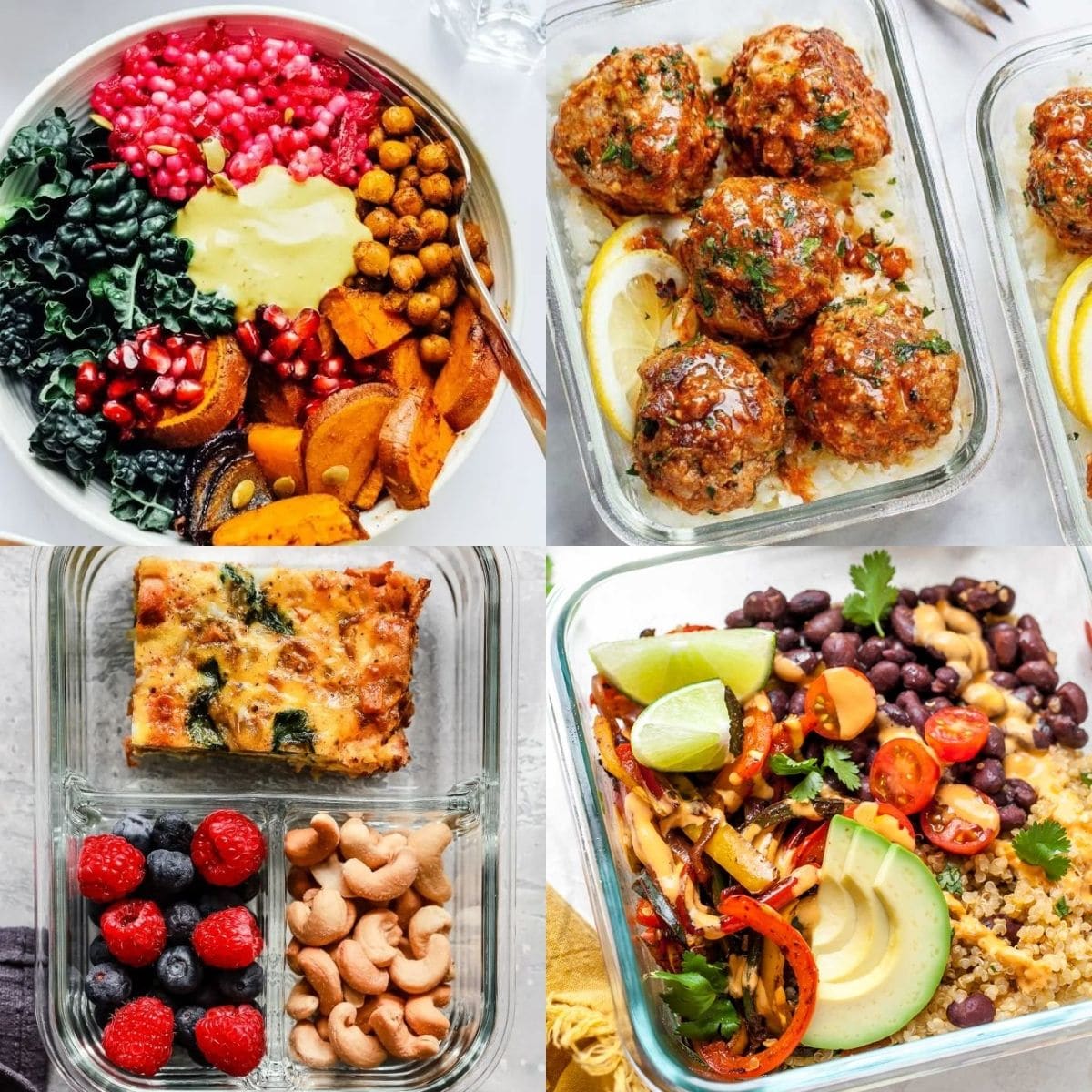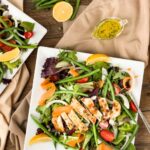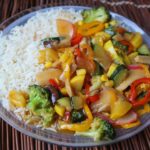Conquer your week with vibrant, allergen-free meals! Imagine a world where healthy eating is simple, even with dietary restrictions. This guide unveils five delicious, globally-inspired recipes, meticulously crafted to be both allergen-free and incredibly adaptable to various dietary needs. Prepare to ditch the takeout and embrace a week of effortless, flavorful meals, all while keeping your specific needs in mind. We’ll walk you through every step, from ingredient sourcing and kitchen prep to stunning presentation and creative serving suggestions. Get ready to transform your mealtimes!
We’ll equip you with detailed, step-by-step instructions, complete with precise measurements and timing. Learn how to efficiently prep ingredients ahead of time, saving precious minutes during your busy week. Discover smart storage techniques to keep your ingredients fresh and prevent spoilage. We’ll even delve into essential allergen-free kitchen practices, ensuring your meals remain safe and delicious. Visuals will guide you through each recipe’s transformation, highlighting the beauty and appeal of each dish.
Recipe Ideas & Variations
This section details five allergen-free meal prep recipes, designed for a busy week, showcasing diverse culinary styles. Each recipe offers adaptability for various dietary restrictions, ensuring delicious and inclusive meal planning. A sample weekly meal plan is provided for easy implementation.
Five Allergen-Free Meal Prep Recipes
These recipes are designed to be free from the common top eight allergens (milk, eggs, peanuts, tree nuts, soy, wheat, fish, and shellfish). Always check ingredient labels to ensure products used are allergen-free. Adjust portion sizes according to individual needs.
- Monday: Spicy Coconut Curry with Cauliflower Rice. A vibrant and flavorful dish featuring tender cauliflower rice simmered in a creamy coconut milk-based curry sauce with an array of colorful vegetables like bell peppers, broccoli, and spinach. The curry paste can be adjusted for spice level. This recipe is naturally vegan and easily adaptable to vegetarian diets. A picture would show a vibrant, steaming bowl of curry, with bright orange and green vegetables visible against a creamy white sauce. The cauliflower rice is fluffy and light, contrasting with the rich sauce.
- Tuesday: Lemon Herb Roasted Chicken and Sweet Potatoes. Juicy chicken pieces are roasted alongside sweet potatoes, seasoned with a zesty lemon herb blend. This recipe is naturally gluten-free and can be adapted for dairy-free diets by omitting any dairy-based seasonings. A visual would show golden-brown chicken pieces and sweet potatoes nestled together on a baking sheet, glistening with herb-infused oil, with the aroma of herbs and lemon filling the kitchen.
- Wednesday: Quinoa Salad with Roasted Vegetables and Avocado. A refreshing and healthy salad featuring fluffy quinoa tossed with roasted vegetables like zucchini, eggplant, and red onion, all topped with creamy avocado slices. This recipe is naturally vegan and gluten-free. A vivid image would showcase a vibrant salad in a glass bowl, with colorful roasted vegetables and creamy avocado against a backdrop of fluffy quinoa. The contrasting colors and textures create a visually appealing and healthy meal.
- Thursday: Beef and Broccoli Stir-Fry. Tender strips of beef are stir-fried with crisp broccoli florets in a savory sauce. Ensure soy sauce used is tamari or coconut aminos for soy-free option. Serve over rice or cauliflower rice. This recipe can be adapted for vegetarian diets by substituting the beef with firm tofu or tempeh. A dynamic image would show the stir-fry in a wok, the beef and broccoli glistening with a dark, flavorful sauce, steam rising from the hot dish.
- Friday: Salmon with Roasted Asparagus and Brown Rice. Flaky salmon fillets are roasted alongside tender asparagus spears. Serve with a side of fluffy brown rice. This recipe is naturally gluten-free and easily adapted for dairy-free diets. A picture would display perfectly cooked salmon fillets with vibrant green asparagus, sitting next to a mound of fluffy brown rice. The salmon is moist and flaky, the asparagus is bright green and tender, creating a visually appealing and balanced meal.
Weekly Meal Plan
This meal plan incorporates the five recipes above, providing a balanced and varied diet throughout the week. Leftovers can be enjoyed for lunch or repurposed in other meals.
| Day | Meal |
|---|---|
| Monday | Spicy Coconut Curry with Cauliflower Rice |
| Tuesday | Lemon Herb Roasted Chicken and Sweet Potatoes |
| Wednesday | Quinoa Salad with Roasted Vegetables and Avocado |
| Thursday | Beef and Broccoli Stir-Fry |
| Friday | Salmon with Roasted Asparagus and Brown Rice |
Adapting Recipes for Dietary Needs
Each recipe can be easily modified to accommodate various dietary needs while maintaining an allergen-free status. For vegetarian adaptations, replace meat with tofu, tempeh, lentils, or other plant-based proteins. Vegan adaptations simply require omitting any dairy or honey. Always carefully check ingredient labels to confirm the absence of allergens.
Remember to prioritize the use of certified allergen-free products to minimize the risk of cross-contamination.
Ingredient Sourcing & Storage

Careful ingredient selection and proper storage are paramount to ensuring the success and safety of your allergen-free meal prep. Choosing high-quality, fresh ingredients will significantly impact the flavor and nutritional value of your meals, while correct storage prevents spoilage and maintains optimal texture and taste. This section will guide you through sourcing the best ingredients and storing them effectively to maximize freshness and minimize waste.
Allergen-Free Ingredient Lists and Substitutions
This section details ingredient lists for sample allergen-free recipes, highlighting substitutions for common allergens. Always double-check labels to confirm the absence of allergens, even in seemingly safe products. Remember, cross-contamination can occur during processing or preparation. Therefore, dedicated allergen-free preparation areas and equipment are highly recommended.
Recipe 1: Lemon Herb Roasted Chicken and Vegetables
- 1 whole chicken (ensure it’s processed in a facility that doesn’t handle allergens; check labels carefully)
- 1 lb baby potatoes, scrubbed
- 1 lb carrots, peeled and chopped
- 1 lemon, juiced and zested
- 2 tbsp fresh rosemary, chopped (or 1 tbsp dried)
- 2 tbsp fresh thyme, chopped (or 1 tbsp dried)
- 2 tbsp olive oil
- Salt and pepper to taste
Recipe 2: Quinoa Salad with Roasted Sweet Potatoes and Black Beans
- 1 cup quinoa, rinsed
- 2 large sweet potatoes, peeled and cubed
- 1 (15-ounce) can black beans, rinsed and drained
- 1 red bell pepper, chopped
- 1/2 red onion, chopped
- 1/4 cup chopped cilantro
- 2 tbsp lime juice
- 1 tbsp olive oil
- Salt and pepper to taste
Optimal Storage Methods for Prepped Ingredients
Maintaining the freshness and quality of your prepped ingredients requires careful attention to storage. Different ingredients have different storage needs, and adhering to these guidelines will significantly extend their shelf life and prevent spoilage.
Proper storage techniques vary depending on the ingredient. For example, raw meats should be stored in airtight containers on the bottom shelf of the refrigerator to prevent cross-contamination. Vegetables, like those used in the recipes above, should be stored in crisper drawers to maintain moisture. Cooked quinoa can be stored in an airtight container in the refrigerator for up to 4 days, while roasted sweet potatoes can be stored in the same manner for up to 3 days. Always ensure containers are properly sealed to prevent freezer burn. Freezer storage is ideal for longer-term preservation.
Creating a Categorized Shopping List
Organizing your shopping list by grocery store section saves time and ensures you don’t miss any necessary items. This approach streamlines your shopping experience.
A well-organized shopping list should categorize items by grocery store section: produce, dairy, meat, dry goods, etc. For example, your list for the recipes above might look like this:
| Produce Section | Meat & Seafood Section | Dry Goods & Pantry | Dairy & Refrigerated |
|---|---|---|---|
| Baby potatoes, carrots, lemon, rosemary, thyme, red bell pepper, red onion, cilantro, sweet potatoes | Whole chicken | Quinoa, black beans (canned), olive oil, salt, pepper |
This journey into allergen-free meal prepping concludes with a newfound confidence in your kitchen abilities. You’ve gained not just five recipes, but a complete system for creating delicious, healthy, and safe meals throughout the week. Remember the vibrant colors, the tantalizing aromas, the satisfying textures—these are the hallmarks of your new, empowered approach to healthy eating. Embrace the simplicity, enjoy the delicious results, and savor the peace of mind knowing you’re nourishing your body with care and intention. Happy cooking!
Questions Often Asked
Can I freeze these meals for later use?
Yes, many of these recipes freeze well. Allow them to cool completely before storing in airtight containers.
What if I don’t have all the listed ingredients?
The recipes offer substitutions and suggestions for adapting to what you have on hand. Focus on the core flavors and adjust accordingly.
How long do the prepped ingredients last in the refrigerator?
Properly stored, prepped ingredients should last 3-5 days. Always check for freshness before using.
Are these recipes suitable for children?
Yes, with appropriate adjustments for portion sizes and spice levels, these recipes are suitable for children. Always supervise children in the kitchen.


